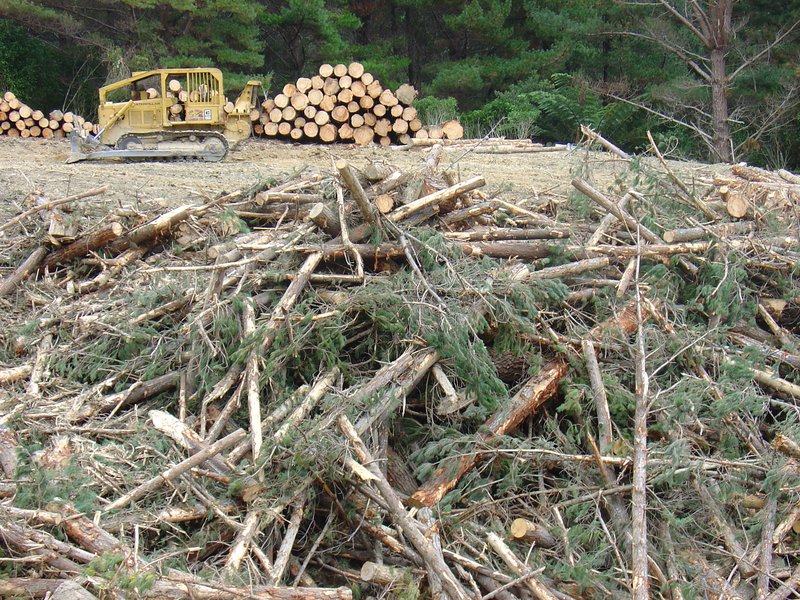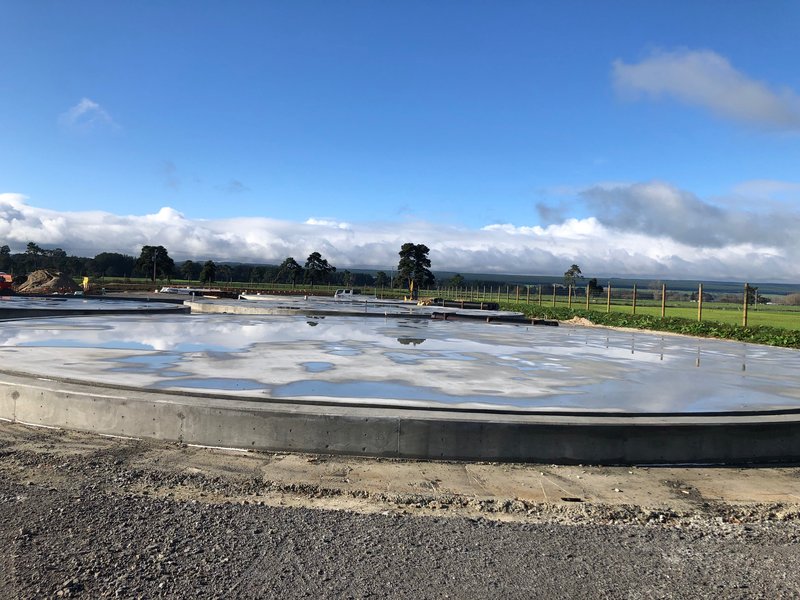10 Mar 2022
In Aotearoa’s journey towards net-zero carbon, electric vehicles and green hydrogen have sometimes hogged the headlines and monopolised government attention. Less notice has been paid to the role that might be played by various forms of biofuel – biogas, liquid biofuels and solid biomass such as forestry residue, but that appears to be changing.
In December 2021, the Government announced it will mandate the use of sustainable biofuels to help cut emissions in the transport sector. There have also been some developments with biogas. At Reporoa in the Central North Island, joint venture Ecogas is building New Zealand’s first large-scale food waste-to-bioenergy facility. Meanwhile, some hospitals, schools and commercial users are starting to adopt solid biofuels as an alternative to using coal, diesel or natural gas for heating. Clearly, an opportunity is emerging for biofuel, and engineers are a key part of that future.
A biofuel-friendly future?
Brian Cox, Executive Officer of the Bioenergy Association of New Zealand, says bioenergy already accounts for a greater share of our energy system than we probably realise.
“It’s the forgotten giant in a way – 11 percent of our consumer energy already comes from biomass. Most people don’t know about that because the bulk of it is in the pulp and paper sector. Our prediction is that we could increase that to 27 percent. By 2050, a quarter of our energy could be coming from biomass and waste.”
Brian says solid biofuels are already well-established in the wood processing sector. Despite some challenges of feedstock, “it’s an easy one to do”, he says. “The technology is easy, the standards are easy, you don’t need any great sophistication.”
However, when it comes to stepping up the use of biomass and liquid biofuel for transport there are more challenges. In terms of biogas plants, we’ve gone backwards since the 1980s, when there were more anaerobic digestors recycling our organic waste into energy than there are today, he remarks. Likewise, there’s been no great momentum for liquid biofuels such as ethanol and biodiesel, which in this country account for less than 0.1 percent of sales compared with four percent globally. In 2020, Z Energy mothballed its biodiesel plant in Wiri due to climbing feedstock prices, and Gull, the first supplier to bring biofuel to the Kiwi market, halted the import of biodiesel.
The problem is economics: natural gas and petrol have a price advantage, and, unlike countries that are further down the road on biofuels, there’s been no real financial incentive here for doing anything with organic waste (a potential feedstock) other than dumping it.
The new Sustainable Biofuels Mandate will make a difference by focusing fuel suppliers on progressively reducing the greenhouse gas emissions of the product they sell. Brian predicts most of the biofuel will be imported, and it won’t be cheap. Longer term, we could build biorefineries here to make renewable diesel, he says.
We know the technology – but without government subsidising it they don’t work,” he says, adding that the Government needs to commit to biofuel with the same enthusiasm it has shown for electric vehicles and hydrogen. Get it right, he says, and he has no doubt that biofuels can play an important role in decarbonising land transport, which is the source of almost half of our carbon dioxide emissions, as well as aviation, shipping and rail.
As an engineer, Brian sees a major role for engineers in this potential biofuel-friendly future. He points to engineers currently working in the oil and gas industry in Taranaki, where he lives.
“They’re process engineers, chemical engineers and they have exactly the right skills to convert to working on bioenergy activities. It’s less about understanding the science, and more about application.”

Residues from harvest on skid site are easy and cheap to recover. Image: Brian Cox, Bioenergy Association
Decarbonisation and beyond
What about biogas? A 2021 joint study by Beca, Firstgas Group and Fonterra, asserts that renewable biogas has the potential to replace 20 percent of New Zealand’s total gas usage by 2050. It also concludes that biogas made using existing organic waste could slash four percent of our energy-related emissions.
Beca’s Industrial Sustainability Lead, Eleanor Grant, co-authored the report. “You look at a country like Denmark which has replaced 20 percent of its natural gas pipeline with biomethane – using organic waste from agriculture as a primary feedstock – and plans to make it 100 percent,” she says.
“We can take that model and apply it here, albeit with some different challenges. It’s a fuel that could be used in the immediate future to start making a real difference in the decarbonisation space.”
An obvious contender is to use biogas as an alternative to natural gas for hard-to-abate process industries that need high-temperature heat.
“We have a real opportunity to put it in a pipeline and send it off to a Fonterra plant or something similar.”
The benefits go beyond the obvious decarbonisation payoff. The CO2 scrubbed out in the process of converting biogas to biomethane can be used by the food and beverage industry, for instance. There’s also potential to produce biofertiliser, which can help carbon sequestration in the soil and reduce the use of imported chemical fertilisers.
“It’s not just about renewable fuel; there are a whole lot of areas that can affect our emissions.”
Why hasn’t New Zealand done more to tap this? Again, economics. We’ve enjoyed abundant natural gas and no pressure to divert some forms of organic waste from landfill, explains Eleanor. Also, our dairy farming methods make it more challenging to use on-farm waste as a feedstock than somewhere such as Europe, where “indooring” is more common. According to Brian, things are changing here as dairy farms make more use of feeding and stand-off pads, which concentrate the effluent.
Life after coal
Fonterra is stepping up its efforts to exit coal. Having converted a milk processing plant at Te Awamutu to forestry byproduct wood pellets in 2020, the co-op is in the throes of replacing a coal boiler with an 11 megawatt biomass boiler at its cheese plant in Stirling, Otago.
Fonterra engineer and Programme Manager Stacey Fellows says electrification was an option at Stirling, but biomass won out because it didn’t require the complex and high-cost changes to milk processing infrastructure.
“You’re switching process heat to be sourced from a new renewable fuel boiler instead of a coal one.”
Stirling is the first of eight Fonterra sites slated for conversion to alternative fuel sources as the co-op works towards exiting coal entirely by 2037. It was a straightforward first-up project, with only one boiler involved. Other sites have multiple boilers, and “we’ll need to do those in a build sequence”, Stacey says.
“We’re learning so much as engineers as we do each project, sharing the good stuff and the things we’d do differently, so the engineers on the next project have the advantage of that knowledge.”
Eleanor says the biggest challenge is that this is a cross-sector piece of work, with the agricultural, gas and waste industries used to solving their own problems.
“What we need is for the Government to set some strong drivers that would make them all want to work together and for it to provide clear policy direction. If we could get some incentives on diverting food or organic waste from landfill and renewable gas incentives, together those would go a long way towards making a difference.”
Following the announcement of the Sustainable Transport Biofuels Mandate, there have been calls from industry groups to establish a similar mandate for the gas sector to help encourage investment and build a market.
“We celebrate the Government’s drive to increase uptake of biofuels in Aotearoa and reduce transport emissions,” says Brian.
“We say don’t stop there.”
Eleanor sees plenty of scope for engineers in building the biogas plant and infrastructure needed to bring the vision alive.
“It’s the same skills as all heavy industrial processes, really. You need process, mechanical, electrical and civil – a multi-disciplinary approach,” she says.
“Engineers who are working with clients looking to decarbonise are often only considering solid biomass or electricity as options. So, my request is to make sure you think about biogas or biomethane as an option and understand you might need to work across sectors.”
(Bio)fuelling the health sector
Canterbury District Health Board (DHB) has replaced two coal-fired boilers with a pair of woody biomass boilers as part of a new $44m Energy Centre that will service the main Christchurch Hospital campus as well as the new Waipapa Building when it becomes operational this year. It follows a similar move at Burwood Hospital in 2016 and the replacement of an LPG boiler with a woodchip boiler at Hillmorton in 2013. The DHB is also assessing options for reducing emissions at its Greymouth and Reefton facilities.
Canterbury DHB Energy Manager Tim Emson says: “The boilers are a great way to dispose of waste wood, and they emit far less carbon dioxide than conventional fossil fuels.” He adds: “The new Energy Centre for Christchurch Hospital will reduce Canterbury DHB’s emissions by 50 percent alone.”
Biomethane into the gas grid
The Beca report has been described as a milestone for the gas and agricultural sectors. Another milestone will be the operational launch this year of the Ecogas plant, the first instance of biomethane injected into the New Zealand gas grid. The project is a joint venture with Firstgas Group, which is investing between $6 million and $8 million to
Engineers who are working with clients looking to decarbonise are often only considering solid biomass or electricity as options. So, my request is to make sure you think about biogas or biomethane as an option and understand you might need to work across sectors. - Eleanor Grant
Connect its distribution network to the facility at Reporoa and supply biogas generated from organic waste – most of it food waste from Auckland – to 9,000 homes and businesses.
Firstgas Engineering and Projects Manager Kevin Stretton CMEngNZ IntPE(NZ) says the company is building an upgraded plant where CO2 will be stripped out and the gas treated so it meets reticulation standards. The CO2 waste stream will be used to boost yields at a neighbouring T&G Fresh tomato-growing glasshouse.
The project has a number of sustainability benefits, he says.
“Obviously the waste that would have gone to landfill and produced methane is being avoided. We’re displacing natural gas, which is a fossil fuel. And we’re channelling CO2 into production of food, a fair portion of which will go to Auckland, get consumed, make its way into kerbside green bins and start the cycle again.”
Challenges? “It’s the first, so we’re learning a lot as we go, things like setting up renewable gas certification and regulatory hurdles. It’s a proven technology overseas, but we’re building up the skills and understanding in New Zealand, and setting up a market so there’s demand for this,” Kevin says, adding that engineers of all stripes have been involved.
“However, there’s definitely a shortage of engineers with specific knowledge around biogas production, particularly process engineers. The ones available have mostly come from overseas, so we’re drawing on that international experience. We see this as an opportunity to upskill the engineers we have in the specifics of biogas and biomethane upgrading.”

The Ecogas Reporoa site with the foundations ready for the digestors to be built. Image: Ecogas




